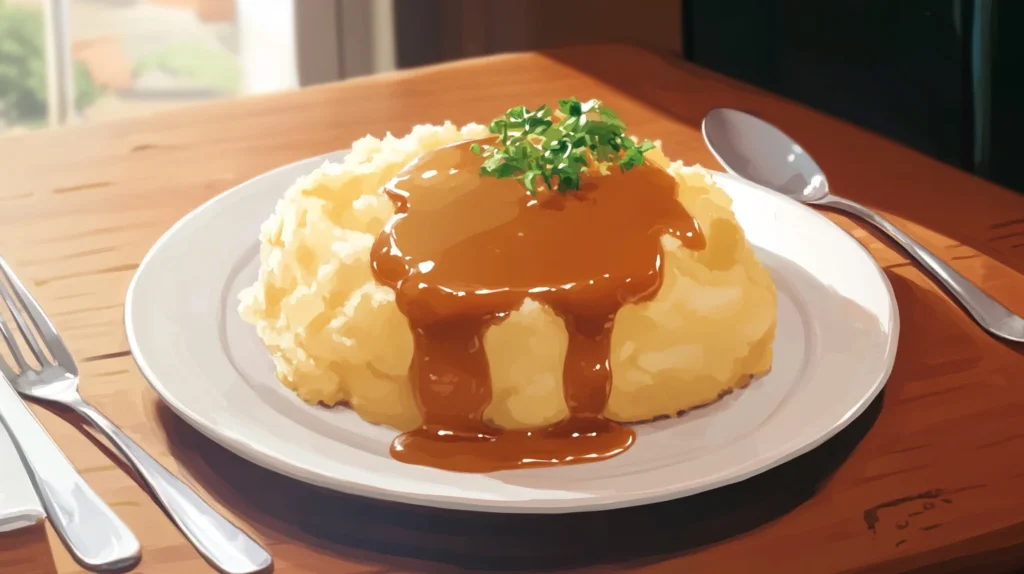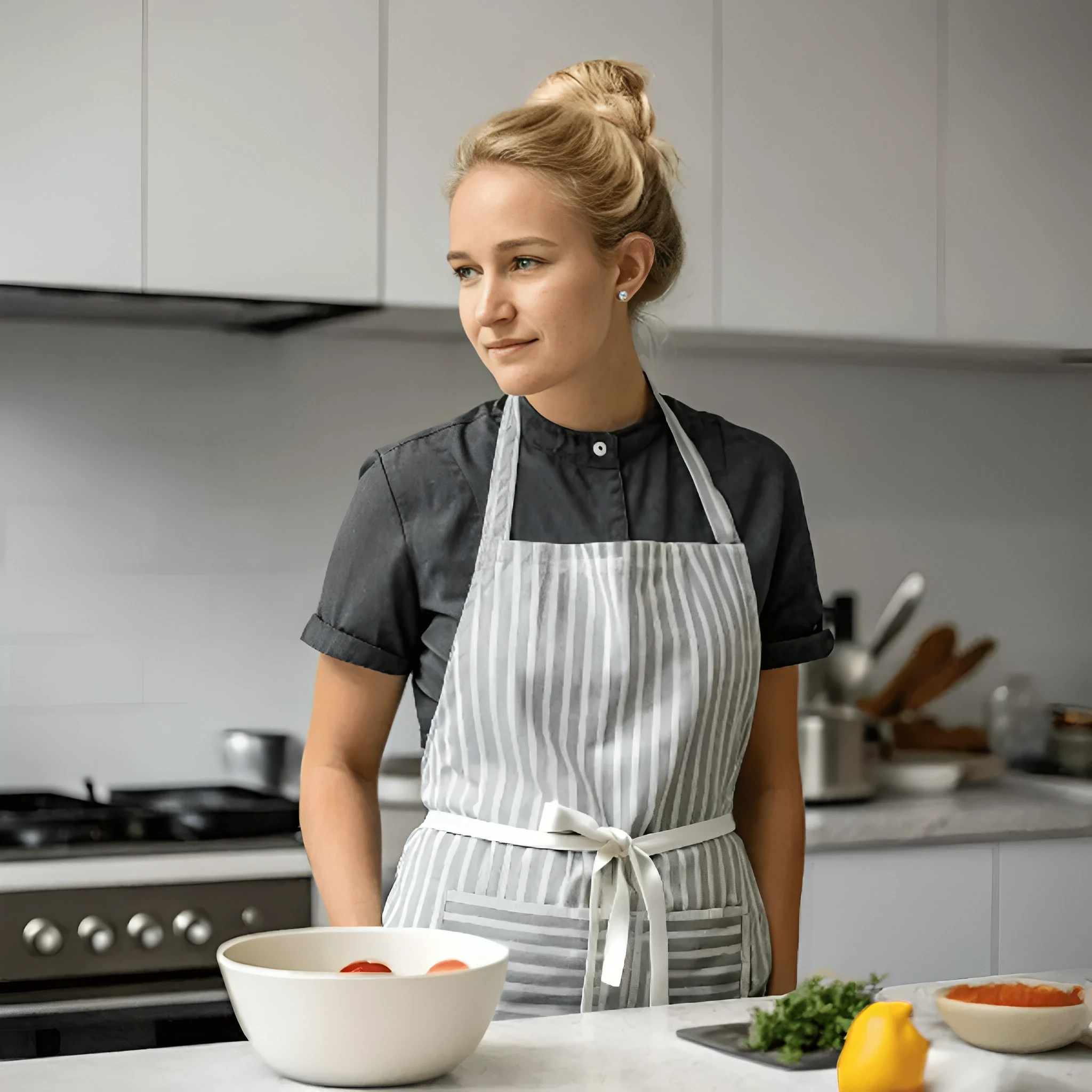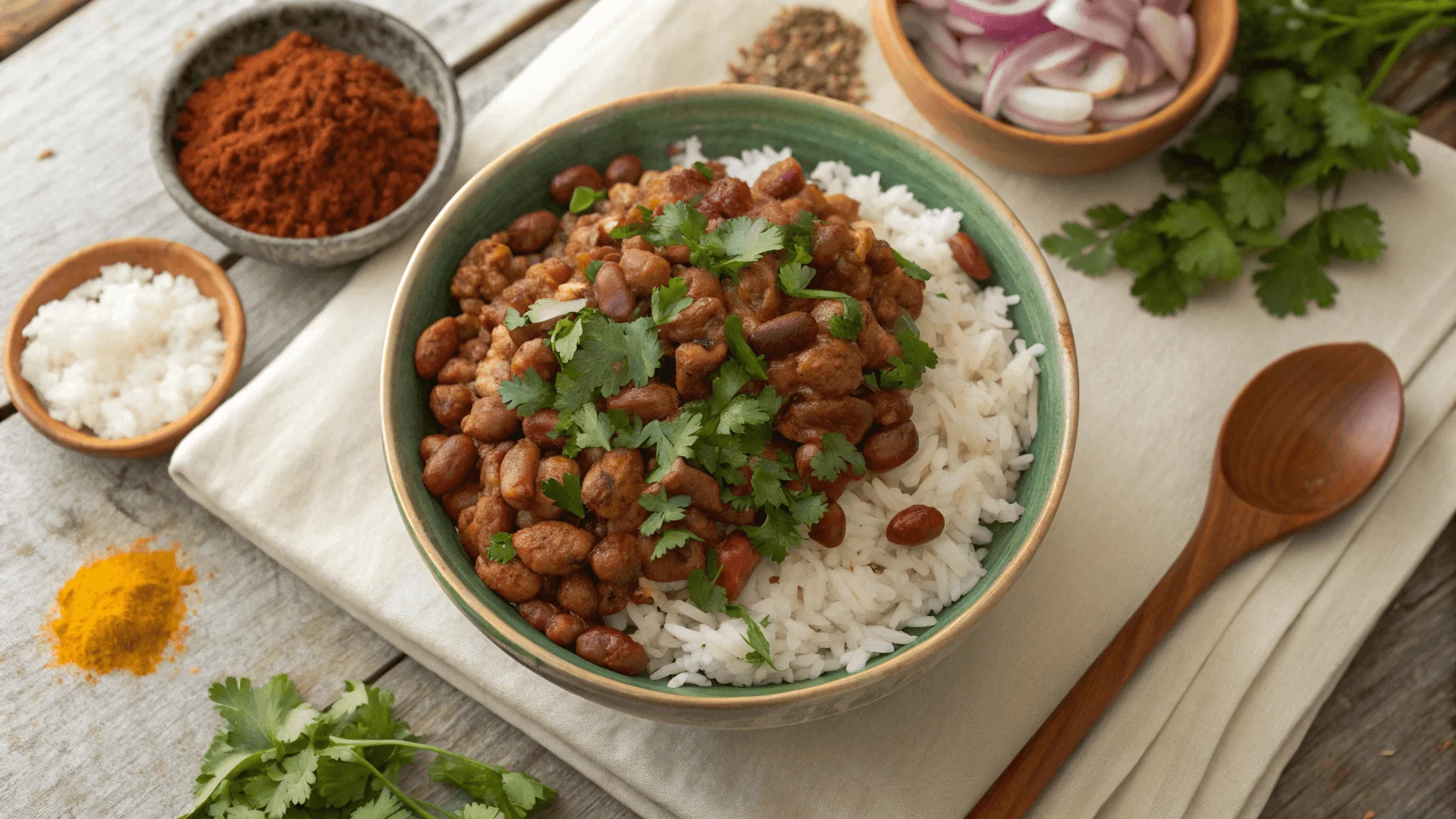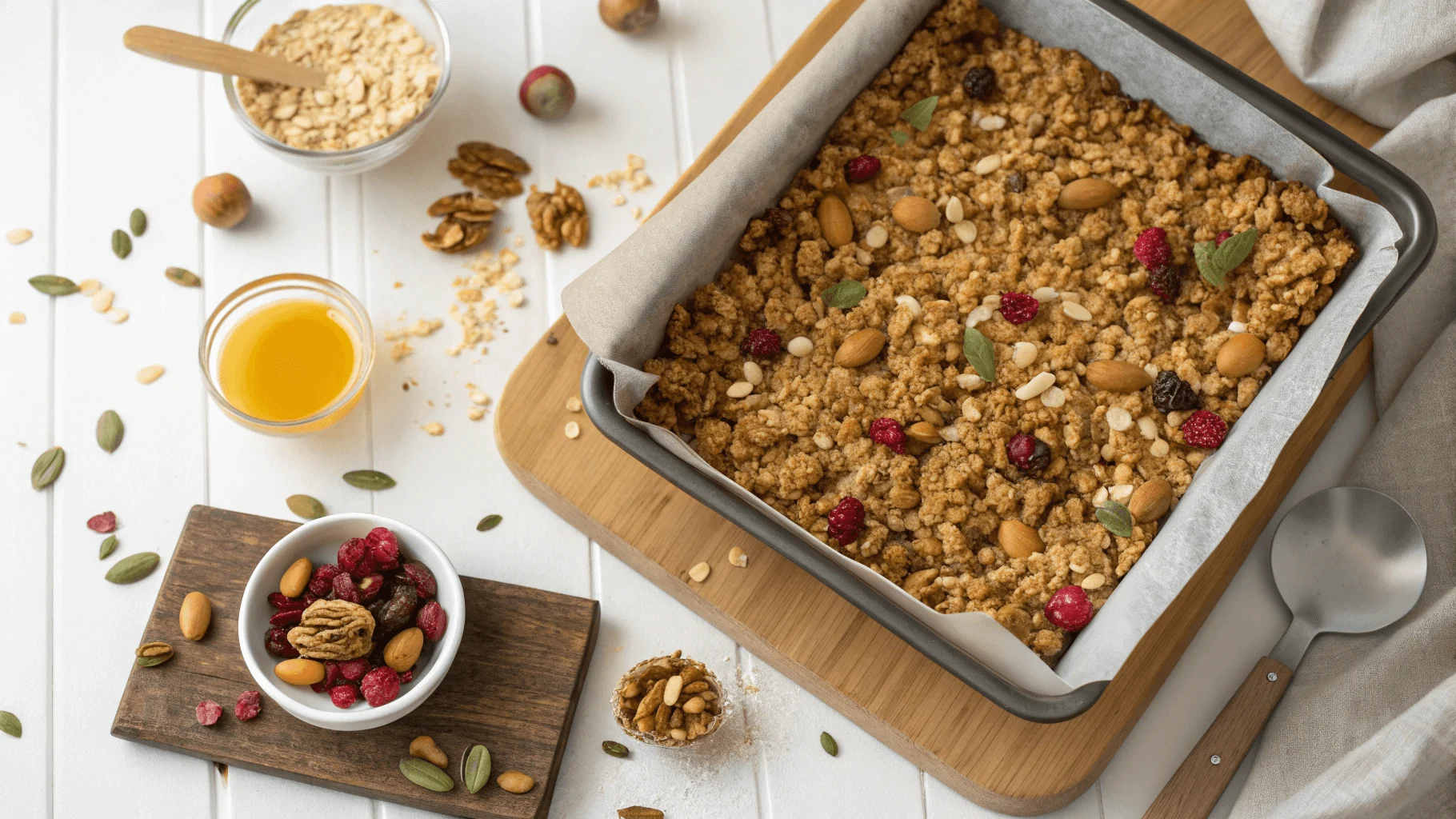Mashed potatoes and gravy are a beloved comfort food combination enjoyed by many across the globe. This classic dish has become a staple in households, restaurants, and holiday feasts alike. Whether paired with roasted meats or enjoyed alone, mashed potatoes and gravy provide a hearty, satisfying, and indulgent meal. The velvety texture of mashed potatoes combined with savory gravy creates a perfect balance of taste and comfort. It’s no wonder that so many people love this classic dish, cherished by all ages. In this article, we cover everything about mashed potatoes and gravy, from types to pairing suggestions and healthier preparation tips.
What Are Mashed Potatoes and Gravy?
This dish pairs creamy potatoes with a rich sauce made from meat drippings. To make the potatoes, boil them and mash with butter, milk, and seasonings until smooth. The gravy, on the other hand, is a savory sauce that adds moisture and flavor to the potatoes. Together, they create a comforting, satisfying dish often served with meats, such as roast beef, chicken, or turkey.
Potatoes can be made using different types, each contributing a unique texture and flavor to the dish. The key to great potatoes is ensuring they are creamy and light, while the sauce should be thick and flavorful. This dish shows how simple ingredients can come together, creating a meal that exceeds its individual parts.
Explore the essential ingredients for mashed potatoes and gravy here.
Different Types of Mashed Potatoes
Mashed potatoes come in various forms, depending on the type of potato used, the preparation method, and added flavorings.
- Classic Mashed Potatoes: Made with russet potatoes, this traditional version is buttery and smooth, with a soft texture that pairs perfectly with gravy.
- Garlic Mashed Potatoes: Adding garlic to mashed potatoes enhances the flavor, giving them a savory, aromatic taste that complements rich gravies.
- Cream Cheese Mashed Potatoes: Cream cheese adds an extra layer of richness and tang, making these mashed potatoes ultra-creamy and indulgent.
- Loaded Mashed Potatoes: These mashed potatoes include ingredients like bacon, cheese, and chives for a more robust and flavorful dish.
- Sweet Potato Mashed Potatoes: Made with sweet potatoes, this variation offers a slightly sweet flavor, which pairs well with both savory and sweet gravies.
Regardless of the variety, mashed potatoes should have a smooth, creamy consistency that can easily absorb gravy. The key to perfect mashed potatoes lies in selecting the right type of potato and balancing butter, milk, or cream.
Find out whether to use milk or cream in mashed potatoes for the perfect consistency.
Types of Gravy
Gravy is a versatile sauce that can be made from various ingredients, depending on the dish and the flavor profile you desire. To that end, the two most common types of sauce served with potatoes are:
- Brown Gravy: This classic gravy is made from beef or turkey drippings, flour, and stock. Brown gravy has a deep, rich flavor and pairs beautifully with roasted meats like turkey, beef, and pork.
- White Gravy: Also known as milk gravy, white gravy is typically made with a roux (flour and butter) and milk or cream. It’s lighter than brown gravy and often accompanies dishes like chicken-fried steak or biscuits.
Moreover, other variations of sauce include mushroom sauce, onion sauce, and vegetarian sauce made with vegetable stock or miso. The key to great sauce is achieving the right consistency and seasoning, ensuring it complements the potatoes without overpowering them.
How to Make Perfect Mashed Potatoes
Making perfect mashed potatoes requires a few simple steps and the right technique. By following these tips, you can achieve mashed potatoes that are light, fluffy, and full of flavor:
- Choose the Right Potato: For the creamiest mashed potatoes, use russet or Yukon Gold potatoes. These varieties have a high starch content that creates a smooth texture when mashed.
- Boil the Potatoes Properly: Cut the potatoes into even chunks before boiling to ensure they cook evenly. Boil the potatoes until they are fork-tender, which typically takes 15-20 minutes.
- Mash with Care: After draining the potatoes, mash them while they are still hot using a potato masher or a ricer. This will ensure the potatoes remain fluffy and smooth.
- Add Butter and Cream: For a rich, creamy texture, add butter, milk, or cream to the mashed potatoes. The more butter and cream you use, the creamier the potatoes will be.
- Season Well: Don’t forget to season your mashed potatoes with salt, pepper, and any other seasonings you like. Fresh herbs, garlic, or cheese can also be added for extra flavor.
Once your mashed potatoes are ready, serve them immediately with a generous helping of gravy for the perfect comfort food combination.
Discover the best dishes to pair with mashed potatoes and gravy here.
How to Make the Best Gravy
Making the best gravy starts with creating a flavorful base. Here’s a simple method to make smooth, rich gravy:
- Start with Drippings or Stock: For brown gravy, begin by deglazing the pan with a bit of broth or water to capture all the flavorful bits. If you’re making white gravy, start with a roux (butter and flour).
- Thicken the Gravy: Gradually whisk in your liquid (beef or chicken stock, milk, or a combination), and allow the mixture to simmer. Stir frequently to prevent lumps.
- Season to Taste: Taste your gravy and add salt, pepper, and other seasonings, such as herbs or soy sauce, to deepen the flavor.
- Strain for Smoothness: If you want extra smooth gravy, strain it through a fine mesh sieve to remove any remaining solids before serving.
In conclusion, gravy should have a smooth consistency that coats the back of a spoon. It should be flavorful enough to complement, not overwhelm, your mashed potatoes.
Pairing Mashed Potatoes and Gravy with Meals
Mashed potatoes and gravy are incredibly versatile and can be paired with a wide range of dishes. Here are a few meal ideas to pair with this classic duo:
- Roast Turkey: A Thanksgiving staple, roast turkey and mashed potatoes with gravy are a perfect pairing. The rich gravy complements the moist, flavorful turkey.
- Roast Beef: The savory flavors of roast beef pair wonderfully with mashed potatoes and a hearty brown gravy.
- Fried Chicken: Crispy fried chicken and creamy mashed potatoes with gravy create a comforting, satisfying meal.
- Pork Chops: Juicy pork chops served with mashed potatoes and gravy offer a well-balanced dish that’s both savory and filling.
What makes this dish so special is its ability to pair with almost any type of meat, from lamb to chicken, or even enjoyed as a stand-alone comfort food dish.
Common Mistakes to Avoid
While making mashed potatoes and gravy is simple, there are several common mistakes you should avoid to ensure your dish turns out perfectly:
- Over-Mixing the Potatoes: Over-mashing or using an electric mixer can lead to gluey potatoes. Mash by hand for the best texture.
- Not Seasoning Enough: Mashed potatoes need ample seasoning to bring out their flavor. Don’t forget to taste and adjust as needed.
- Making Lumpy Gravy: To avoid lumps in your gravy, whisk constantly when adding liquid and make sure to strain it before serving.
- Using the Wrong Potatoes: Using waxy potatoes like red potatoes can result in a denser texture, which may not work well for mashed potatoes.
By avoiding these mistakes, you’ll ensure your dish is smooth, flavorful, and satisfying.
The Nutritional Value of Mashed Potatoes and Gravy
Mashed potatoes and gravy, while delicious, can be quite rich in calories and fat, depending on the ingredients used. Here’s a breakdown of the nutritional value:
- Mashed Potatoes: A typical serving of mashed potatoes (about 1 cup) contains around 200-250 calories, 15 grams of fat, and 30-35 grams of carbohydrates. The calories can increase if you add butter or cream.
- Gravy: Gravy is usually low in calories (around 50-100 per serving), but it can be high in fat if made with butter or drippings. Brown gravy tends to have more calories due to the use of meat drippings.
To make mashed potatoes and gravy healthier, you can use less butter or milk, opt for a low-fat gravy, or substitute some of the fat with healthier alternatives, like olive oil or vegetable broth.
Mashed Potatoes and Gravy: A Holiday Tradition
Mashed potatoes and gravy are integral to many holiday meals, particularly during Thanksgiving and Christmas. The creamy potatoes and savory sauce are a symbol of comfort and tradition. Whether served alongside turkey, roast beef, or ham, this dish brings warmth and joy to festive gatherings.
For many, the tradition of serving this dish during the holidays goes beyond just the meal. In fact, it serves as a way to gather with family and friends, share stories, and enjoy flavors passed down. People often devour this comforting combination as one of the first dishes.
Creative Variations on Mashed Potatoes and Gravy
While the classic version of mashed potatoes and gravy is a timeless favorite, there are countless creative variations you can try to add new flavors and textures to the dish:
- Truffle Mashed Potatoes: Infuse your mashed potatoes with the luxurious taste of truffle oil or truffle butter for an elegant twist.
- Cajun Mashed Potatoes: Add Cajun seasoning or hot sauce to your mashed potatoes for a spicy kick that pairs well with spicy chicken gravy.
- Mushroom Gravy: Make a vegetarian gravy with sautéed mushrooms for a rich, earthy flavor that complements mashed potatoes beautifully.
- Cheese-Stuffed Mashed Potatoes: Add cheese to the center of your mashed potatoes for a gooey, cheesy surprise.
These creative variations offer a chance to experiment with new flavors while still enjoying the comfort of mashed potatoes and gravy.
How to Make Low-Calorie Mashed Potatoes and Gravy
If you’re looking to reduce the calorie content of mashed potatoes and gravy, there are several simple substitutions you can make:
- Mashed Potatoes: Use low-fat milk or chicken broth instead of cream, and opt for less butter or use olive oil for a healthier fat source.
- Gravy: Instead of using meat drippings, make a vegetarian gravy with vegetable broth, reducing the fat content without sacrificing flavor.
These adjustments will help create a lighter version of this classic dish without compromising on taste.
The Best Sides to Serve with Mashed Potatoes and Gravy
Mashed potatoes and gravy pair wonderfully with a variety of side dishes. Some of the best options include:
- Green Beans: Steamed or sautéed green beans provide a crisp contrast to the creamy mashed potatoes.
- Roasted Vegetables: Carrots, Brussels sprouts, or asparagus make great sides that complement the richness of mashed potatoes and gravy.
- Salad: A light, refreshing salad with a tangy vinaigrette can balance out the richness of the main dish.
These sides will help round out the meal and add variety to the plate.
How to Make Gravy Without Butter
If you’re looking to make gravy without butter, it’s possible to achieve a rich and flavorful gravy without using any dairy. Here’s how:
- Use Vegetable or Chicken Broth: Instead of starting with butter, use a vegetable or chicken broth base for a savory flavor.
- Create a Roux with Olive Oil: Instead of butter, make your roux with olive oil or another plant-based fat to thicken the gravy.
- Add Flavorings: Use garlic, onions, herbs, and spices to deepen the flavor of your gravy without the need for butter.
This method allows you to make a delicious, dairy-free gravy that still pairs wonderfully with mashed potatoes.
How to Achieve the Perfect Consistency for Gravy
The perfect gravy should have a smooth, pourable consistency that coats your mashed potatoes without being too runny or too thick. To achieve this:
- Control the Liquid: Add your liquid gradually to the gravy base, allowing it to thicken as you go. If the gravy is too thick, add more liquid to reach the desired consistency.
- Simmer for a While: Allow the gravy to simmer and reduce to concentrate the flavors and achieve the right thickness.
The key is to find a balance that works for your taste preferences and the dish you are pairing it with.
Using Leftover Gravy in Other Dishes
If you have leftover gravy, don’t let it go to waste! There are many ways to repurpose leftover gravy, including:
- Gravy Soup: Add leftover gravy to a pot with some broth, vegetables, and spices for a quick and flavorful soup.
- Sauce for Pasta: Use gravy as a base for a rich pasta sauce, especially for dishes like pasta bakes or meatballs.
- Sandwich Filling: Pour gravy over roast meat sandwiches for added flavor and moisture.
Leftover gravy can be a great way to add extra flavor to other meals, preventing it from going unused.
How Mashed Potatoes and Gravy Reflect Different Cultures
Mashed potatoes and gravy are enjoyed worldwide, with different cultures putting their own unique spin on the dish. Mashed potatoes and gravy are a popular comfort food in the United States, often served with turkey or roast beef. In the UK, this dish is typically paired with a hearty meat pie, while in Ireland, it is commonly combined with cabbage and bacon.
Across many cultures, mashed potatoes and gravy symbolize comfort and togetherness, especially when reserved for special occasions or family gatherings. Moreover, the combination of flavors and textures resonates with people across various regions. Consequently, this makes mashed potatoes and gravy a true international dish.
FAQs
1. Can I make mashed potatoes ahead of time?
Yes, mashed potatoes can be made ahead of time and stored in the refrigerator for up to 3 days. To reheat, add a little milk or cream to restore their creamy texture.
2. Can I use vegetable broth for gravy?
Yes, vegetable broth is an excellent base for making vegetarian gravy. It provides a savory depth of flavor without the need for meat drippings.
Conclusion
In conclusion, Mashed potatoes and gravy are an iconic comfort food that never goes out of style. Whether enjoyed as part of a holiday feast or as a simple weeknight meal, this combination offers satisfying flavor and texture. By experimenting with different types of mashed potatoes, gravies, and creative variations, you can make this dish your own. Whether you’re looking for a traditional recipe or want to create a lighter, healthier version, mashed potatoes and gravy are always a crowd-pleaser.






2 thoughts on “The Ultimate Guide to Mashed Potatoes and Gravy: Recipes & Tips”